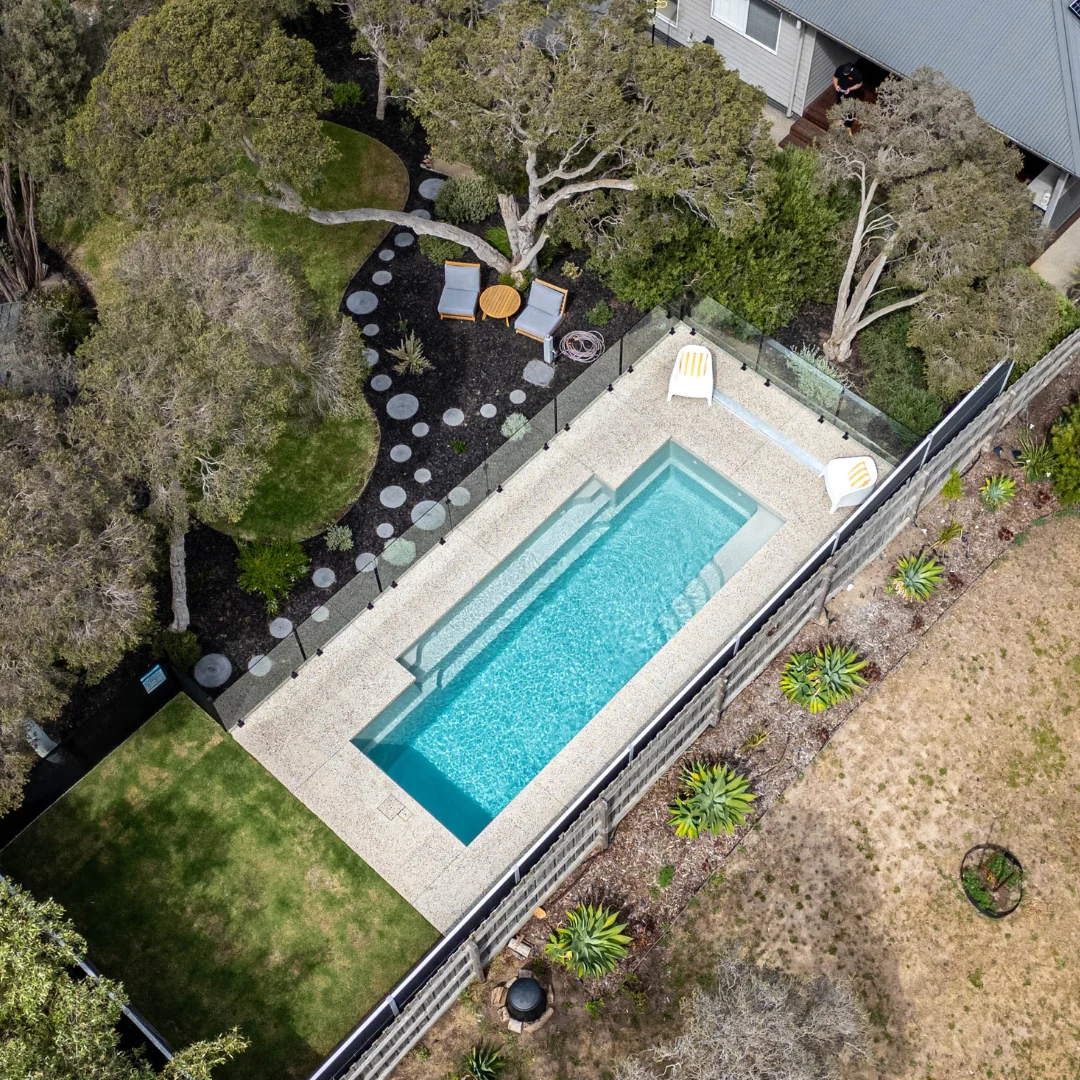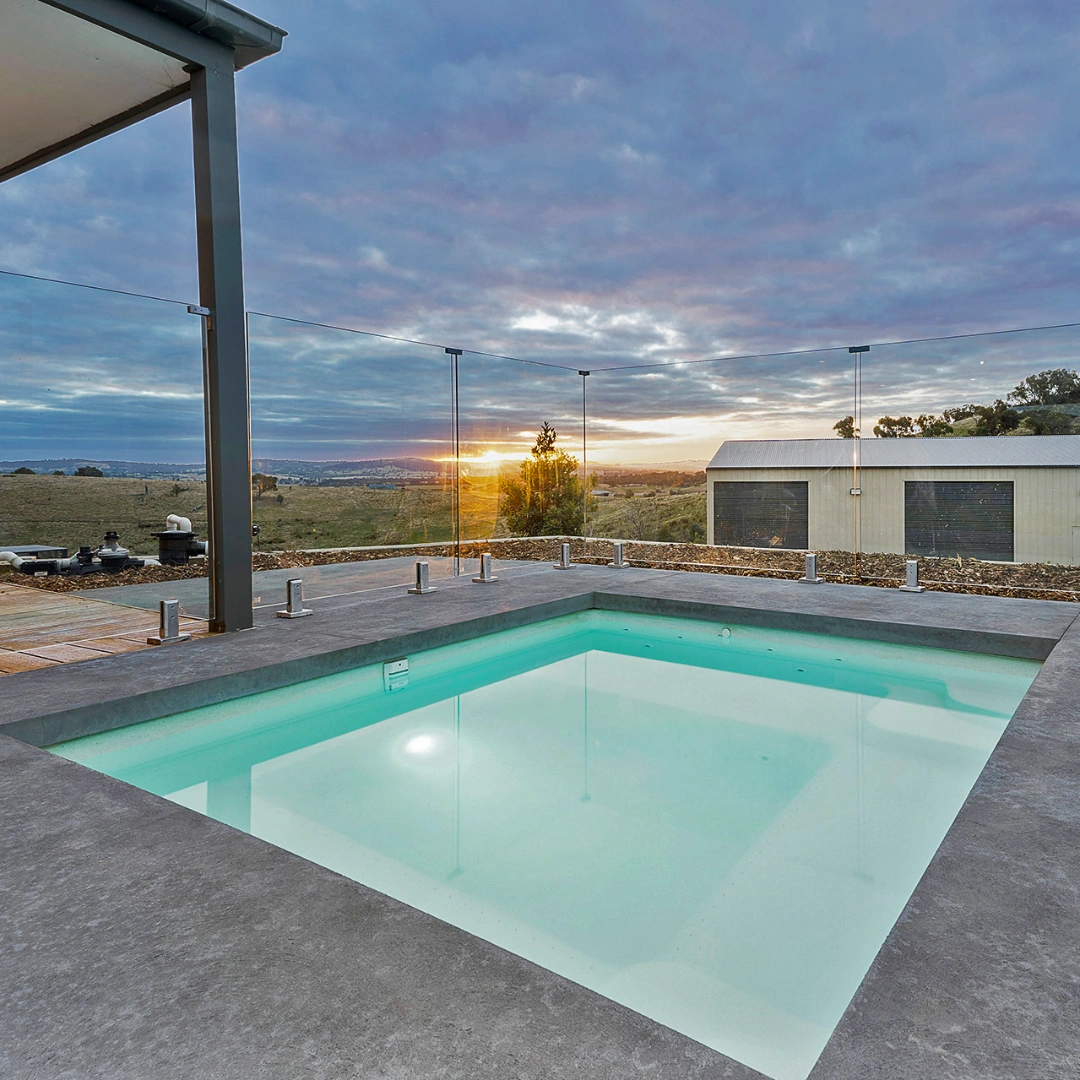Fibreglass Pool Maintenance Tips.
Lower Maintenance Costs with Fibreglass.
Keeping your pool in top shape doesn’t have to eat into your weekends or your budget. With the right maintenance habits - and the right pool type - you can enjoy crystal-clear water all year round. Here’s how to keep costs low and swimming time high, and why fibreglass pools make it easier.
1. Skim the surface regularly.
Leaves, bugs, and debris not only make your pool look messy, they also strain your filtration system. A quick skim every few days keeps the surface clear and water flowing. Empty skimmer baskets weekly to maintain efficiency.
Pro Tip: Stretch an old pair of stockings over your skimmer basket to catch finer debris like hair and dust.
2. Clean filters - the heart of your pool.
Healthy circulation starts with clean filters.
Cartridge filters: Rinse weekly and replace as needed.
Sand/DE filters: Backwash according to the manufacturer’s guide.
Pro Tip: Don’t over-clean - some residue actually improves filtration. Keep an eye on pressure gauges; a big change means it’s time for a clean. Having a spare filter on hand ensures your pool keeps running smoothly while one is out for cleaning.
3. Algae prevention: why fibreglass wins.
Concrete pools need weekly scrubbing to fight algae, which takes time and effort. Fibreglass pools, with their smooth, non-porous surface, naturally resist algae growth. That means less brushing, fewer chemicals, and a pool that looks great with less work.
4. Balance your pool water weekly.
Testing your water once a week keeps swimmers safe and equipment in top shape.
Make sure:
- pH is between 7.2 - 7.8.
- Alkalinity is 80–120 ppm.
- Chlorine levels are around 1 ppm.
Because fibreglass pools need fewer chemicals, it’s easier (and cheaper) to keep levels balanced.
Pro Tip: Drop a tennis ball in the pool - its fibres absorb oils from sunscreen and skin, reducing surface film.
5. Watch your water levels.
Australian summers are hot, and between splashing and evaporation, your pool water level will drop. Low water can damage pumps and affect circulation. Top up as needed.
Pro Tip: Install an automatic water leveller to keep things stress-free.
6. Shock after heavy use.
After big swim sessions or storms, give your pool a shock treatment - a heavier chlorine dose to clear out contaminants. Always shock at night and run the pump for at least 8 hours afterwards for best results.
7. Understanding the costs.
On average, DIY maintenance costs $600–$1,500 annually, covering chemicals, equipment, and electricity. Hiring a pro costs around $60–$150 per visit. With a fibreglass pool, these costs are lower compared to concrete, because the material is so resistant to algae and easier on equipment.
The Bottom Line
All pools need care, but fibreglass pools make maintenance simpler, faster, and more affordable. Less scrubbing, fewer chemicals, and lower long-term costs mean you get more of what really matters - time in the water with your family.
Ready to take the plunge? Give us a call on 1300 548 794 and discover how easy pool ownership can be.
Explore other Knowledge Hub content.
Articles, videos and downloads to help you plan, build, and enjoy your pool.
Our pools.
Ready to start your 12-week countdown?
Let's turn your backyard into the place your whole family wants to be.






